Marketing cookies are used to track the activities of website visitors. This enables advertisements to be displayed that are relevant and appealing for each individual user, and consequently more valuable for publishers and third-party advertisers.
- Service name:YouTube
- Privacy policy:https://policies.google.com/privacy
- Owner:Google Ireland Limited
- HTML Local Storage:yt-remote-device-id
- Purpose:Stores the user settings when retrieving a YouTube video integrated on other web pages.
- Third party:Yes
- HTML Local Storage:yt.innertube::requests
- Purpose:Stores the user settings when retrieving a YouTube video integrated on other web pages.
- Third party:Yes
- HTML Local Storage:yt.innertube::nextId
- Purpose:Stores the user settings when retrieving a YouTube video integrated on other web pages.
- Third party:Yes
- HTML Local Storage:yt-remote-connected-devices
- Purpose:Stores the user settings when retrieving a YouTube video integrated on other web pages.
- Third party:Yes
- HTML Local Storage:yt-player-bandwidth
- Purpose:Stores the user settings when retrieving a YouTube video integrated on other web pages.
- Third party:Yes
- HTML Session Storage:yt-remote-session-app
- Purpose:Stores the user settings when retrieving a YouTube video integrated on other web pages.
- Third party:Yes
- HTML Session Storage:yt-remote-cast-installed
- Purpose:Stores the user settings when retrieving a YouTube video integrated on other web pages.
- Third party:Yes
- HTML Session Storage:yt-remote-session-name
- Purpose:Stores the user settings when retrieving a YouTube video integrated on other web pages.
- Third party:Yes
- HTML Session Storage:yt-remote-cast-available
- Purpose:Stores the user settings when retrieving a YouTube video integrated on other web pages.
- Third party:Yes
- HTML Session Storage:yt-remote-fast-check-period
- Purpose:Stores the user settings when retrieving a YouTube video integrated on other web pages.
- Third party:Yes
- HTTP-Cookie:__Secure-3PSIDCC
- Purpose:Used by for targeting purposes to profile the interests of the website visitor and display relevant and personalised Google advertising
- Domain:.google.com
- Retention period:1 year
- Third party:Yes
- HTTP-Cookie:SIDCC
- Purpose:Security cookie to protect user data from unauthorised access.
- Domain:.google.com
- Retention period:1 year
- Third party:Yes
- HTTP-Cookie:__Secure-3PAPISID
- Purpose:Used by for targeting purposes to profile the interests of the website visitor and display relevant and personalised Google advertising
- Domain:.google.com
- Retention period:2 years
- Third party:Yes
- HTTP-Cookie:HSID
- Purpose:Used by Google in combination with SID to verify Google user account and last login time.
- Domain:.google.com
- Retention period:2 years
- Third party:Yes
- HTTP-Cookie:__Secure-3PSID
- Purpose:Used by for targeting purposes to profile the interests of the website visitor and display relevant and personalised Google advertising
- Domain:.google.com
- Retention period:2 years
- Third party:Yes
- HTTP-Cookie:SID
- Purpose:These Google security cookies help authenticate the user, prevent fraudulent use of login credentials, and protect user data from unauthorised access.
- Domain:.google.com
- Retention period:2 years
- Third party:Yes
- HTTP-Cookie:SSID
- Purpose:These Google security cookies help authenticate the user, prevent fraudulent use of login credentials, and protect user data from unauthorised access.
- Domain:.google.com
- Retention period:2 years
- Third party:Yes
- HTTP-Cookie:SAPISID
- Purpose:These Google security cookies help authenticate the user, prevent fraudulent use of login credentials, and protect user data from unauthorised access.
- Domain:.google.com
- Retention period:2 years
- Third party:Yes
- HTTP-Cookie:APISID
- Purpose:These Google security cookies help authenticate the user, prevent fraudulent use of login credentials, and protect user data from unauthorised access.
- Domain:.google.com
- Retention period:2 years
- Third party:Yes
- HTTP-Cookie:1P_JAR
- Purpose:This cookie is used to support Google's advertising services
- Domain:.google.com
- Retention period:1 month
- Third party:Yes
- Service name:Google reCAPTCHA
- Privacy policy:https://policies.google.com/privacy
- Owner:Google Ireland Limited
- HTTP-Cookie:1P_JAR
- Purpose:This cookie is used to support Google's advertising services
- Domain:.google.com
- Retention period:1 month
- Third party:Yes
- HTTP-Cookie:APISID
- Purpose:These Google security cookies help authenticate the user, prevent fraudulent use of login credentials, and protect user data from unauthorised access.
- Domain:.google.com
- Retention period:2 years
- Third party:Yes
- HTTP-Cookie:CONSENT
- Purpose:Wird von Google verwendet um festzustellen ob Benutzer Inhalten aus der Marketing Kategorie zugestimmt haben.
- Domain:.google.com
- Retention period:2 years
- Third party:Yes
- HTTP-Cookie:DV
- Purpose:Wird von Google verwendet um Benutzereinstellungen zu speichen. Betrifft hauptsächlich Einstellungen die die Suche betreffen wie Sprache, Anzahl der Suchergebnisse etc.
- Domain:www.google.com
- Retention period:7 minutes
- Third party:Yes
- HTTP-Cookie:HSID
- Purpose:Used by Google in combination with SID to verify Google user account and last login time.
- Domain:.google.com
- Retention period:2 years
- Third party:Yes
- HTTP-Cookie:NID
- Purpose:Wird von Google verwendet um Benutzereinstellungen zu speichen. Betrifft hauptsächlich Einstellungen die die Suche betreffen wie Sprache, Anzahl der Suchergebnisse etc.
- Domain:.google.com
- Retention period:182 days
- Third party:Yes
- HTTP-Cookie:SAPISID
- Purpose:These Google security cookies help authenticate the user, prevent fraudulent use of login credentials, and protect user data from unauthorised access.
- Domain:.google.com
- Retention period:2 years
- Third party:Yes
- HTTP-Cookie:SEARCH_SAMESITE
- Purpose:These Google security cookies help authenticate the user, prevent fraudulent use of login credentials, and protect user data from unauthorised access.
- Domain:.google.com
- Retention period:2 years
- Third party:Yes
- HTTP-Cookie:SID
- Purpose:These Google security cookies help authenticate the user, prevent fraudulent use of login credentials, and protect user data from unauthorised access.
- Domain:.google.com
- Retention period:2 years
- Third party:Yes
- HTTP-Cookie:SIDCC
- Purpose:Security cookie to protect user data from unauthorised access.
- Domain:.google.com
- Retention period:1 year
- Third party:Yes
- HTTP-Cookie:SSID
- Purpose:These Google security cookies help authenticate the user, prevent fraudulent use of login credentials, and protect user data from unauthorised access.
- Domain:.google.com
- Retention period:2 years
- Third party:Yes
- HTTP-Cookie:__Secure-1PAPISID
- Purpose:Used by for targeting purposes to profile the interests of the website visitor and display relevant and personalised Google advertising
- Domain:.google.com
- Retention period:2 years
- Third party:Yes
- HTTP-Cookie:__Secure-1PSID
- Purpose:Used by for targeting purposes to profile the interests of the website visitor and display relevant and personalised Google advertising
- Domain:.google.com
- Retention period:2 years
- Third party:Yes
- HTTP-Cookie:__Secure-3PAPISID
- Purpose:Used by for targeting purposes to profile the interests of the website visitor and display relevant and personalised Google advertising
- Domain:.google.com
- Retention period:2 years
- Third party:Yes
- HTTP-Cookie:__Secure-3PSID
- Purpose:Used by for targeting purposes to profile the interests of the website visitor and display relevant and personalised Google advertising
- Domain:.google.com
- Retention period:2 years
- Third party:Yes
- HTTP-Cookie:__Secure-3PSIDCC
- Purpose:Used by for targeting purposes to profile the interests of the website visitor and display relevant and personalised Google advertising
- Domain:.google.com
- Retention period:1 year
- Third party:Yes
- Service name:Facebook Meta Pixel
- Privacy policy:https://www.facebook.com/policy.php
- Owner:Meta Pixel
- HTTP-Cookie:c_user
- Purpose:Enthält die Benutzer-ID des aktuell angemeldeten Benutzers bei Facebook
- Domain:.facebook.com
- Retention period:1 year
- Third party:Yes
- HTTP-Cookie:datr
- Purpose:Identifiziert den Webbrowser, der zur Verbindung mit Facebook verwendet wird.
- Domain:.facebook.com
- Retention period:2 years
- Third party:Yes
- HTTP-Cookie:oo
- Purpose:Hilft dabei, die Anzeige von Werbung basierend auf Aktivitäten auf Drittanbieter-Websites zu deaktivieren.
- Domain:.facebook.com
- Retention period:1 year
- Third party:Yes
- HTTP-Cookie:presence
- Purpose:Enthält den Chat-Status des Benutzers.
- Domain:.facebook.com
- Retention period:Session
- Third party:Yes
- HTTP-Cookie:sb
- Purpose:Speichert Browserdetails für Freundschaftsvorschläge.
- Domain:.facebook.com
- Retention period:2 years
- Third party:Yes
- HTTP-Cookie:usida
- Purpose:Dieses Cookie sammelt eine Kombination aus dem Browser des Benutzers und eindeutigen Kennungen, die zur Anpassung der Werbung an die Benutzer verwendet werden.
- Domain:.facebook.com
- Retention period:Session
- Third party:Yes
- HTTP-Cookie:wd
- Purpose:Speichert die Abmessungen des Browserfensters.
- Domain:.facebook.com
- Retention period:1 year
- Third party:Yes
- HTTP-Cookie:xs
- Purpose:Enthält die Sitzungsnummer und das Sitzungsgeheimnis.
- Domain:.facebook.com
- Retention period:1 year
- Third party:Yes
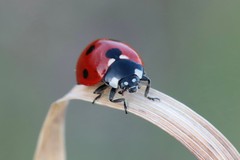 Beetles are by far the most species-rich insect group. Therefore, it is very challenging to gain an overview over their diversity on and in the ground, within water bodies, and in the vegetation. With support of the Austrian Lotteries we currently investigate which native beetle species inhabit the grounds of Schönbrunn Zoo. full text
Beetles are by far the most species-rich insect group. Therefore, it is very challenging to gain an overview over their diversity on and in the ground, within water bodies, and in the vegetation. With support of the Austrian Lotteries we currently investigate which native beetle species inhabit the grounds of Schönbrunn Zoo. full text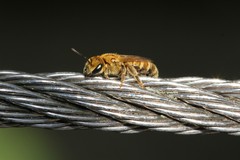 Wild bees are not only our most important pollinators, but constitute a fascinating clade in the animal kingdom with specific demands regarding their habitat. In the course of a bee mapping and monitoring project, several rare species were discovered at Schönbrunn Zoo, where they find suitable nesting sites and flowering plants. full text
Wild bees are not only our most important pollinators, but constitute a fascinating clade in the animal kingdom with specific demands regarding their habitat. In the course of a bee mapping and monitoring project, several rare species were discovered at Schönbrunn Zoo, where they find suitable nesting sites and flowering plants. full text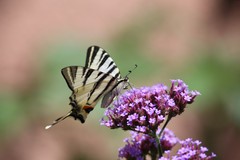 Six butterfly islands have been installed at the zoo, sponsored by the nature conservation initiative “Flowering Austria (“Blühendes Österreich”). The colorful nectar- and forage plants for caterpillars are popular with butterflies and visitors alike. Information charts highlight the various species and their habitats and provide tips for butterfly-friendly home gardens. full text
Six butterfly islands have been installed at the zoo, sponsored by the nature conservation initiative “Flowering Austria (“Blühendes Österreich”). The colorful nectar- and forage plants for caterpillars are popular with butterflies and visitors alike. Information charts highlight the various species and their habitats and provide tips for butterfly-friendly home gardens. full text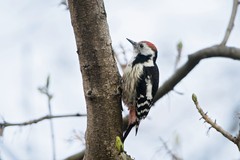 Beyond the rich food resources at the zoo, our many sheltered sites and nesting boxes attract breeding birds, winter guests, and feeding birds throughout the year. The exact species were identified during the course of two systematic surveys. These studies also revealed the presence of very rare birds. full text
Beyond the rich food resources at the zoo, our many sheltered sites and nesting boxes attract breeding birds, winter guests, and feeding birds throughout the year. The exact species were identified during the course of two systematic surveys. These studies also revealed the presence of very rare birds. full text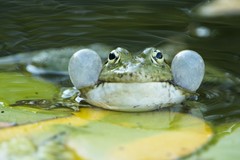 Stones as places to warm up, pools to spawn in, or leaves to hide in: a wide range of different mini-habitats attract the wild amphibians and reptiles that inhabit the zoo grounds. They often share space with tigers, Indian rhinos & Co.! Their populations were surveyed in 2008, and the knowledge gained enabled targeted conservation measures. full text
Stones as places to warm up, pools to spawn in, or leaves to hide in: a wide range of different mini-habitats attract the wild amphibians and reptiles that inhabit the zoo grounds. They often share space with tigers, Indian rhinos & Co.! Their populations were surveyed in 2008, and the knowledge gained enabled targeted conservation measures. full text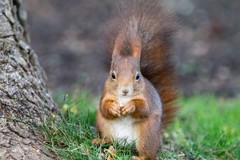 The large forested area in the southern corner of the zoo, the mosaic of pools and park areas, along with our many bushes and shrubs provide an attractive habitat for small mammals in Vienna’s densely populated urban landscape. Their populations were surveyed in detail in 2017, which yielded a small sensation. full text
The large forested area in the southern corner of the zoo, the mosaic of pools and park areas, along with our many bushes and shrubs provide an attractive habitat for small mammals in Vienna’s densely populated urban landscape. Their populations were surveyed in detail in 2017, which yielded a small sensation. full text